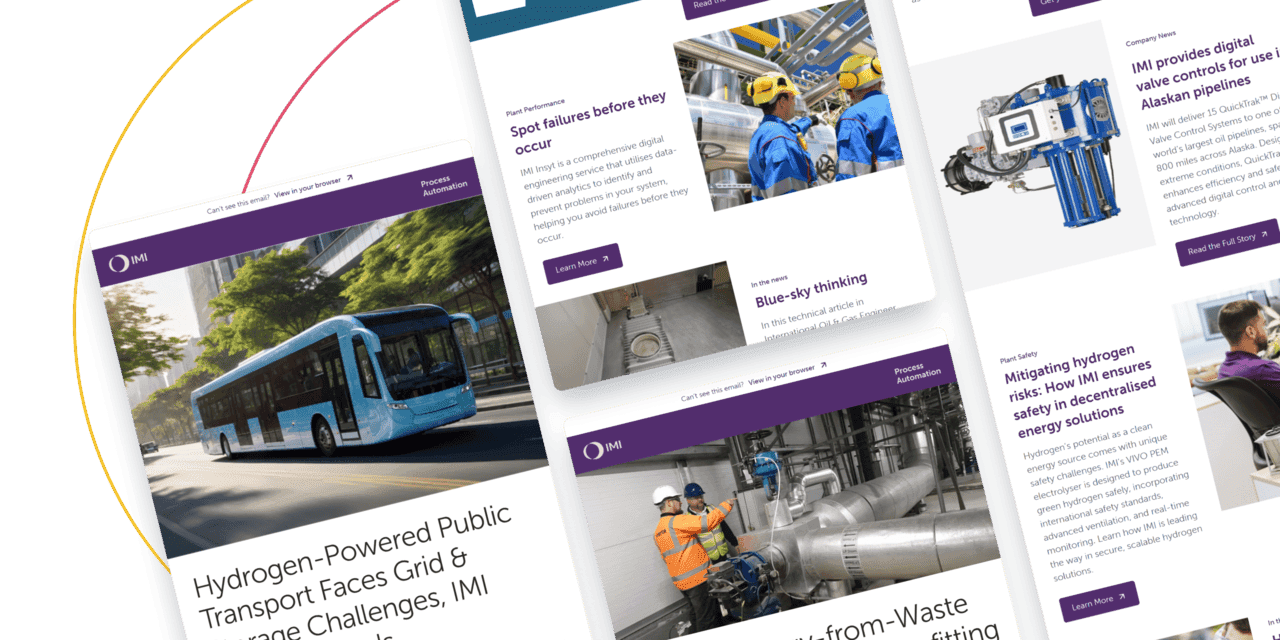Organization Sectors
Organization Sectors
Stay up to date on all the latest Process Automation news
© 2025 IMI plc, All Rights Reserved
© 2025 IMI plc, All Rights Reserved

CASE STUDY

Written By IMI Publications
October 1, 2024
Most often the most experienced engineers are the hardest to track down for meetings because their expertise is in high demand. At the same time, experienced subject matter experts are often the ones who can catch critical errors.
An experienced engineer may be promoted into a management role, broadening their responsibility and giving them less time to devote to each individual design. The problem is that they may be the best-qualified engineer to contribute invaluable insights into a review process. In addition, there will be subject matter experts outside IMI’s engineering teams, such as manufacturing and supply chain professionals, suppliers, and customers, all of whom can also offer important project feedback. This is a lot to keep track of, and relying on informal discussion without any recorded feedback can lead to mistakes.
In the past, IMI’s naval marine engineering team documented and exchanged feedback during meetings using CAD viewers, production drawings, and screenshots of 3D models. This was the only way to collaborate with other experts who didn’t have access to CAD, including suppliers and customers.
Given that this proved to be a less-than-ideal way of working, the IMI team partnered with CoLab to formalise their design review process while making it easy to involve the right experts. CoLab offers out-of-the-box integrations with both SolidWorks and SolidWorks PDM, which makes it easy to share and review CAD with your colleagues and partners (even if they don’t have a SolidWorks license).
Using CoLab, the naval marine engineering team at IMI can kick off design reviews asynchronously. Subject matter experts can access the review no matter what location they might be in via their web browser and interrogate all the relevant CAD models: “It was inconvenient to get people in a room at the same time to review the same thing,” notes IMI Design Engineering Manager Adam Thomas. “But with CoLab, you can do it. There’s no limitation on meeting rooms, where you are, or who’s available.
”Subsequently, IMI can generate more feedback to improve its designs by making it easier for all key project stakeholders to participate in reviews. They’ve also been able to use meeting time more effectively when they get everyone together simultaneously. “You can capture basic errors with CoLab outside of meetings. And when you get people around a table, you can talk about the really detailed or complex information,” adds Adam.
Using CoLab has made it easier for more engineers and cross-functional SMEs to participate in reviews. By doing so, IMI is uncovering design and materials improvements that would otherwise go unnoticed. In a recent example, a team designing a cryogenic valve spotted an opportunity to use stainless steel instead of a more expensive material while still meeting the specifications. “It sounds simple but the fact that more people are reviewing it compared to the spec is really useful. This move to stainless steel is significantly cheaper,” claims Adam.
One of the most impactful changes has been pulling the supply chain team into the review process earlier. Before, they would have to wait for production drawings and bills of materials to be released to the material requirements planning team to start sourcing. With CoLab, the sourcing experts can get involved during the CAD review stage. This shortens the design cycle because sourcing happens in parallel with drawings. It also gives sourcing a chance to surface lead time-related design improvements before a design freeze.
“With CoLab we can start negotiations and see what’s available immediately. Maybe there’s a particular shape of metal that’s on the shelf now rather than the shape we’re requesting later,” explains IMI Technical Director Robert Taylor. “Then we can manipulate the design, see if it’s workable, and put that into the MRP system. So it’s offering an opportunity to shorten lead times. We’re looking to reduce the lead time to one particular customer by about 40 per cent.
”Because IMI’s technical team can communicate more effectively about designs both internally and with the customer, they’re winning more new business. In the quoting phase, IMI uses CoLab directly with their customers to form an understanding of key requirements and design the best solution. As a result, they recently won a new contract, which they hope to develop into a multimillion-dollar line of business.
“We were able to utilise CoLab to define and solve customer problems more quickly and effectively, resulting in this contract,” explains Robert. “We’re now getting on board one of the older legacy submarines. When the customer qualifies us as a vendor in that phase, it opens up the whole aftermarket and upgrade business. We’ve also started discussions about their new submarine – all because we made a great impression by solving a small problem first.”
Stay up to date on all the latest news and articles from IMI.

Stay up to date on all the latest news and articles from IMI.


Stay up to date on all the latest news and articles from IMI.
